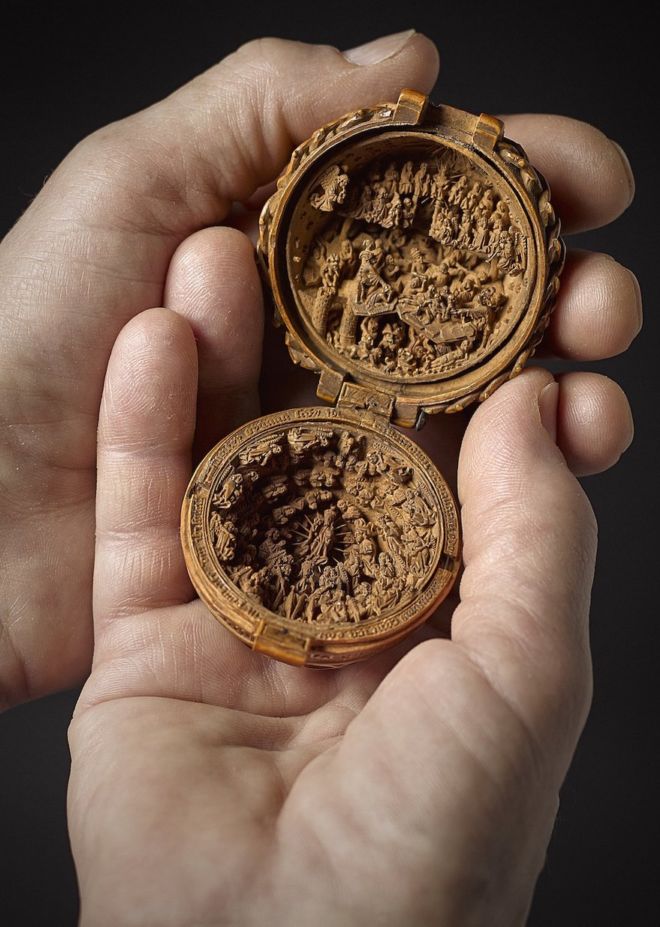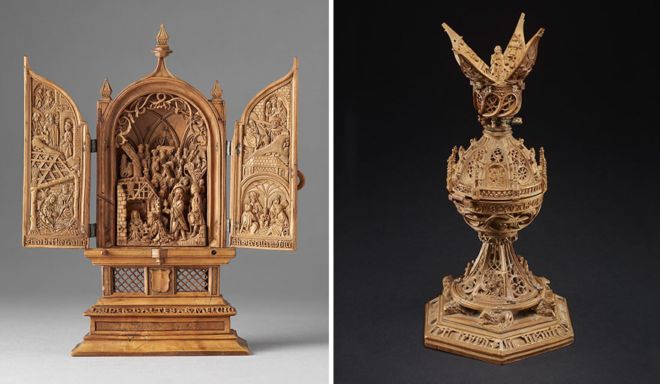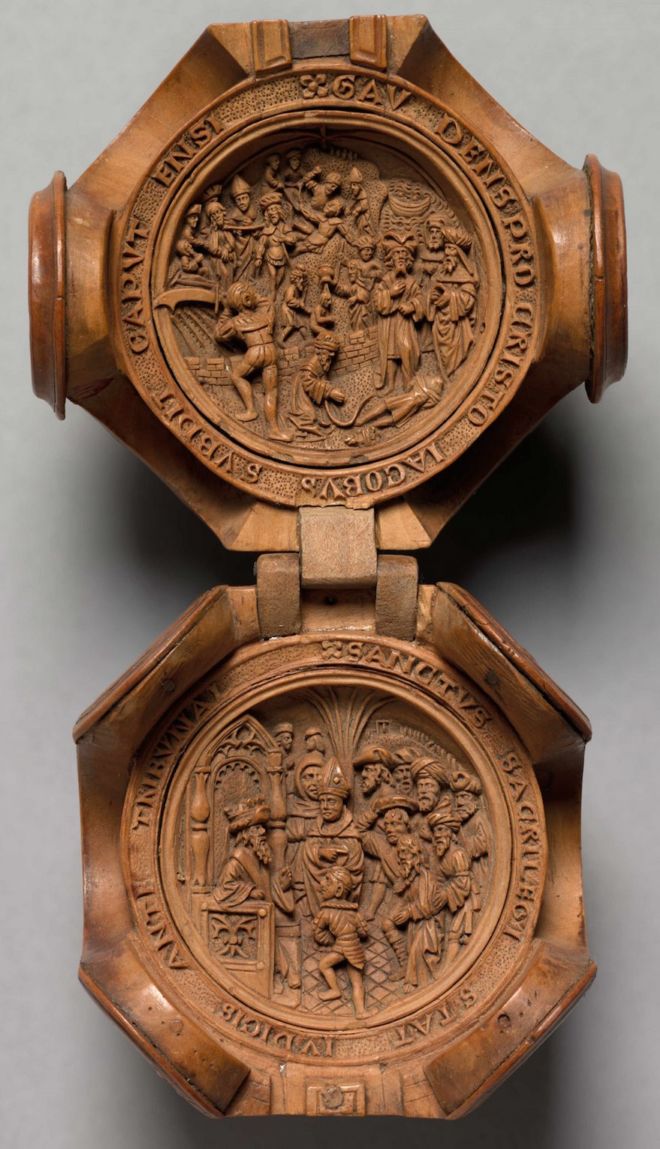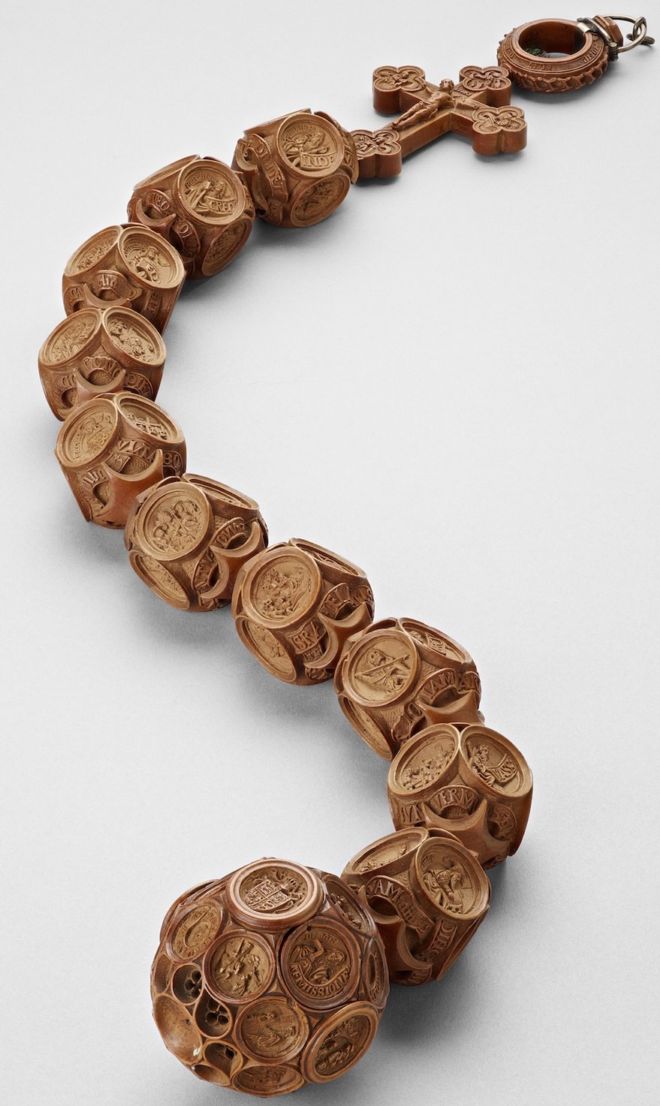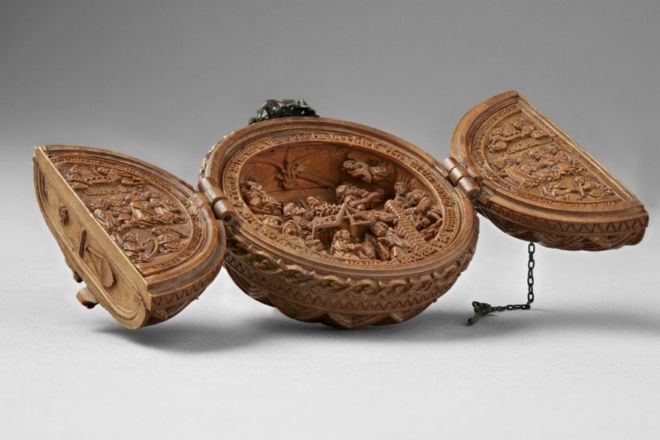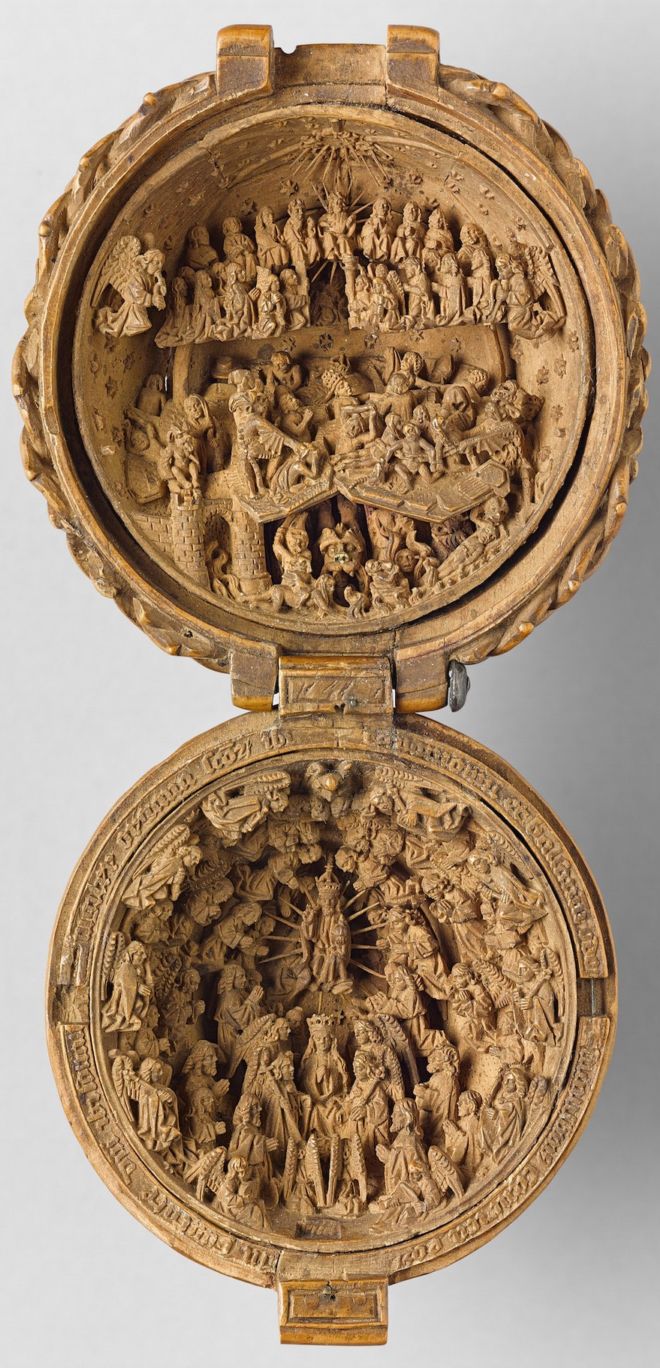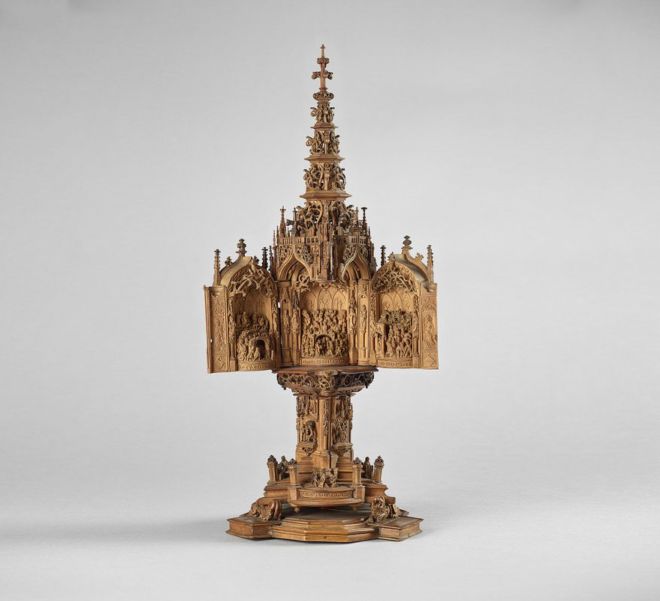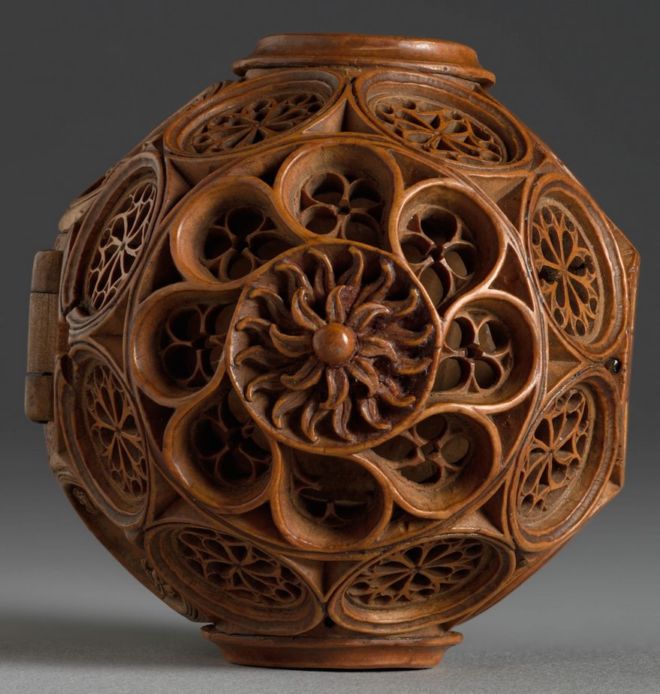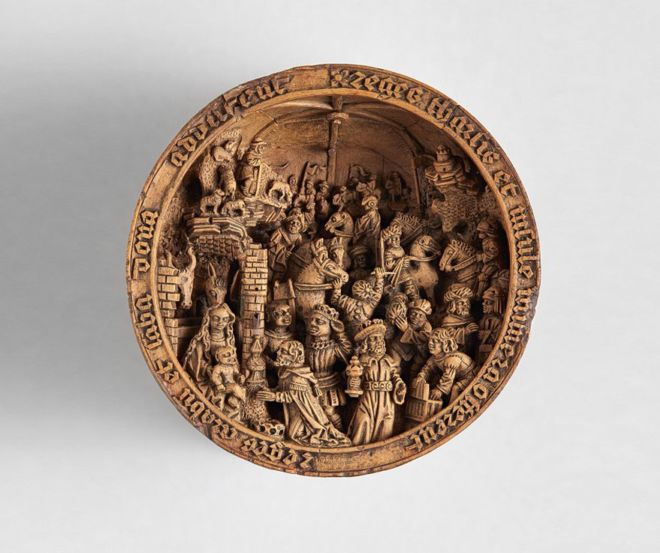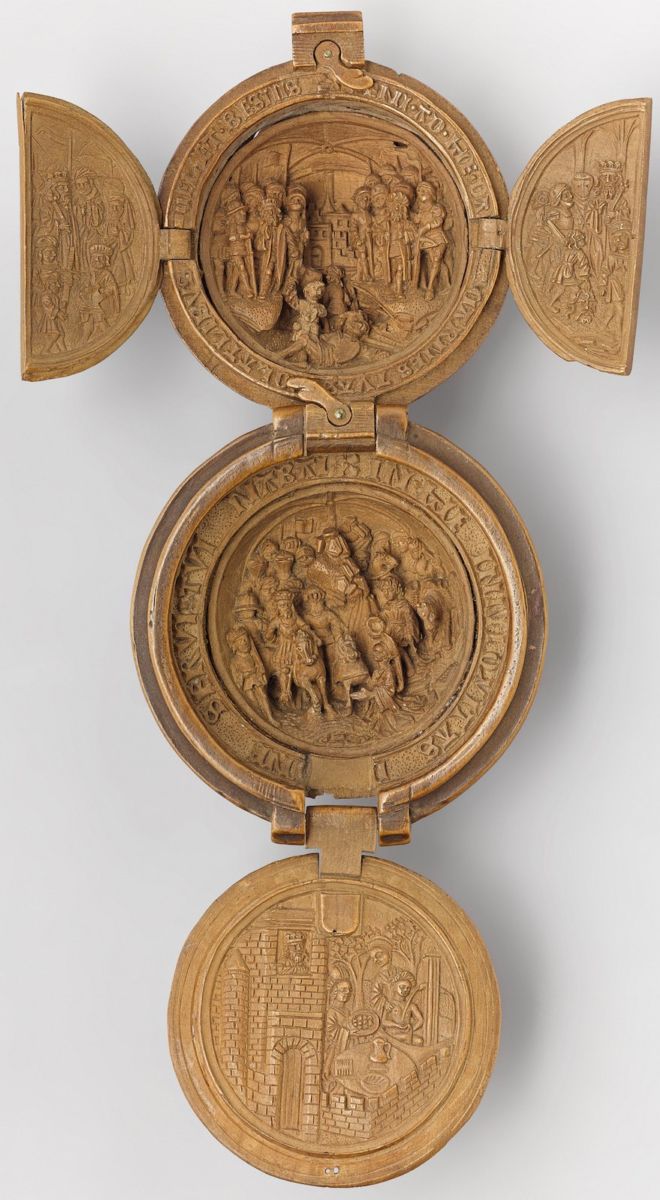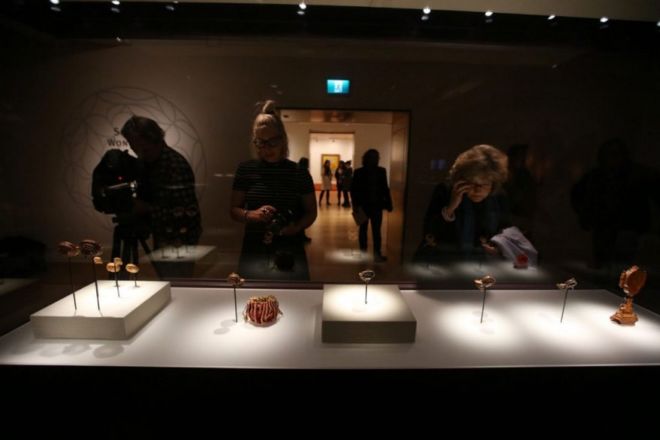It is thought that these wooden carvings were made during only a brief time frame, between 1500 and 1530 either in Flanders or the Netherlands. The rise of a new merchant social class in Europe created a market demand for high-quality portable religious carvings. However, soon the Reformation began and a lot of church-related accessories went out of fashion, including the miniature boxwood pieces.
Using micro-CT scanning and Advanced 3D Analysis Software, researchers found out just how intricate these miniature altars really are. The inner layers are pieced together, hiding the joints so completely, that only a microscope or an X-ray can detect them. The pieces also incorporate pins, smaller than a grass seed. However, much of the production process remains unknown, because traces of gold and other decoration materials conceal the X-ray views.
